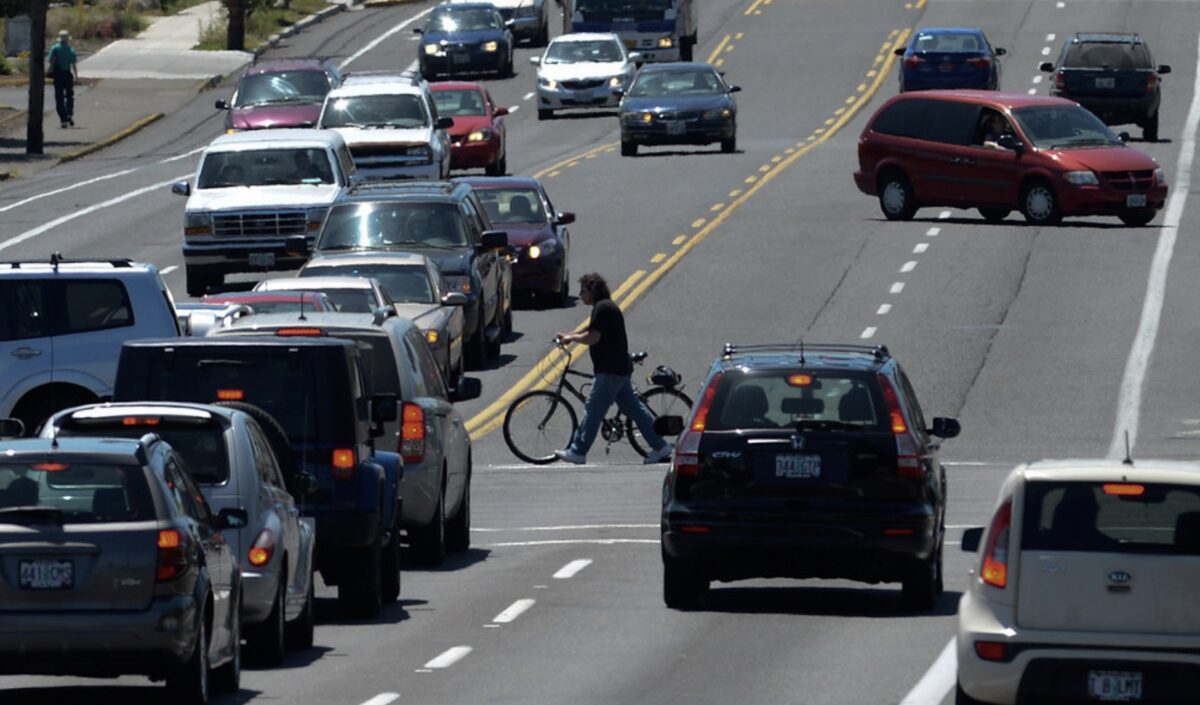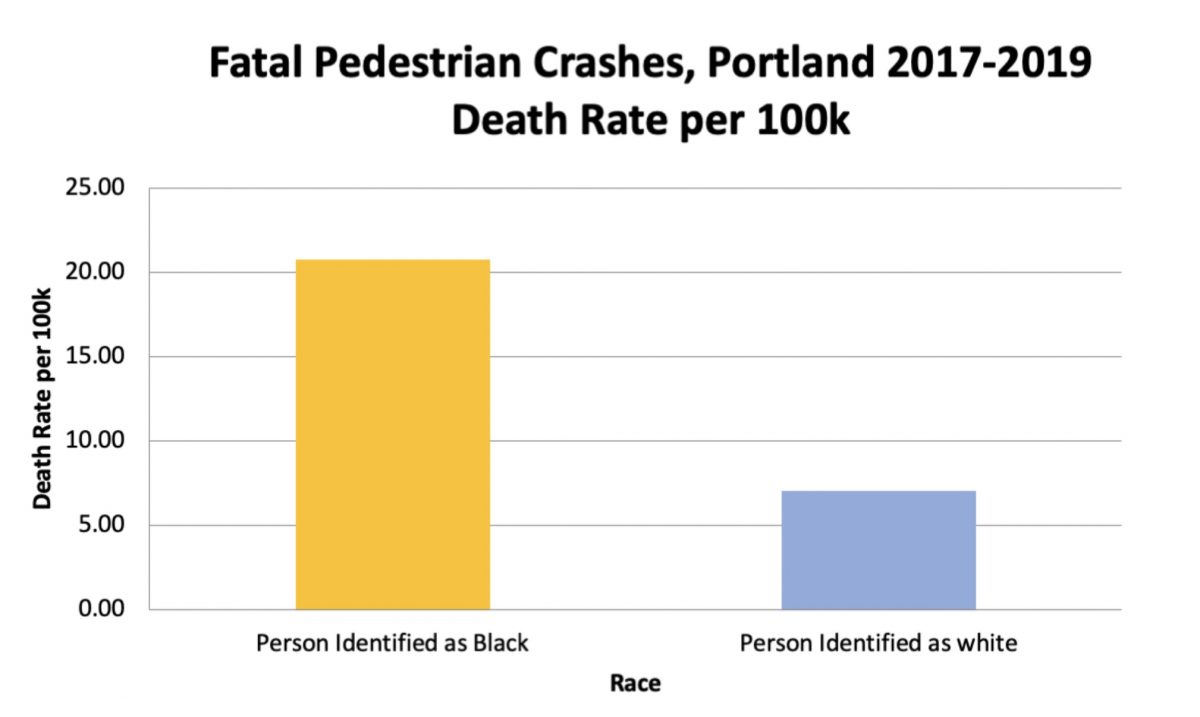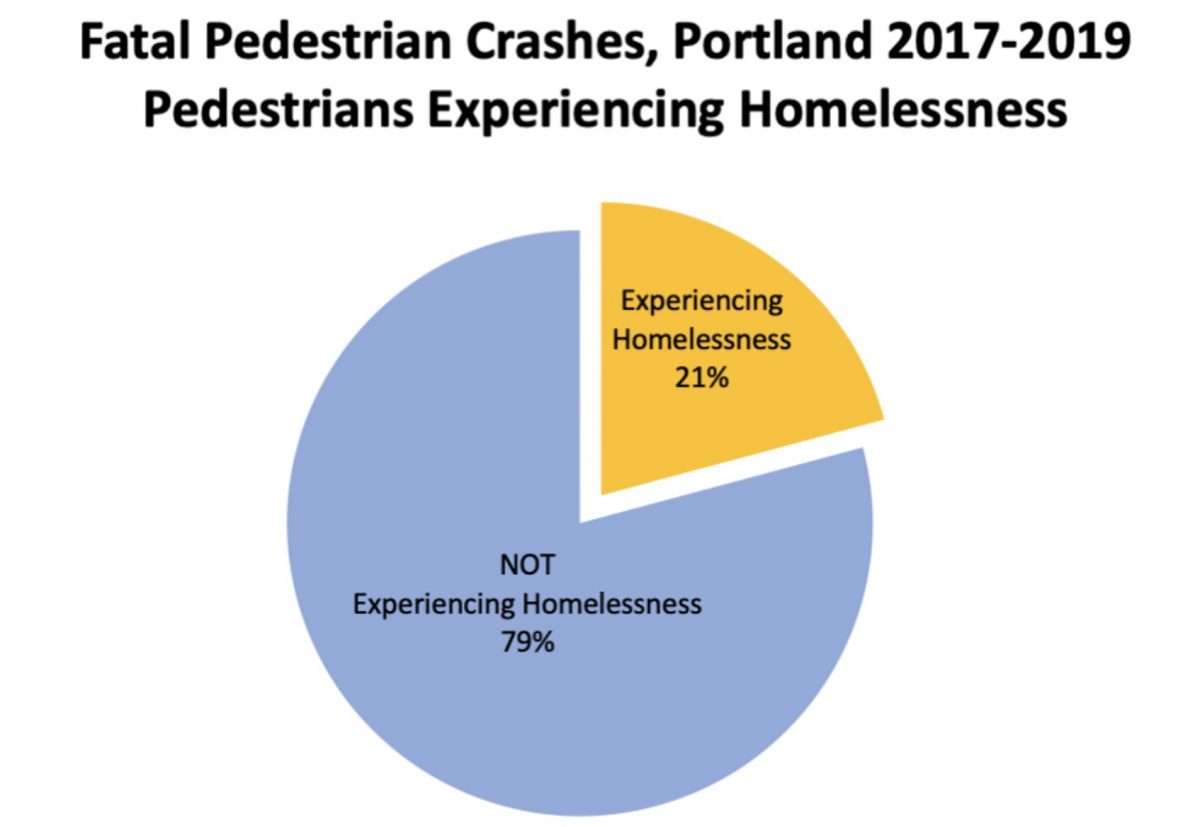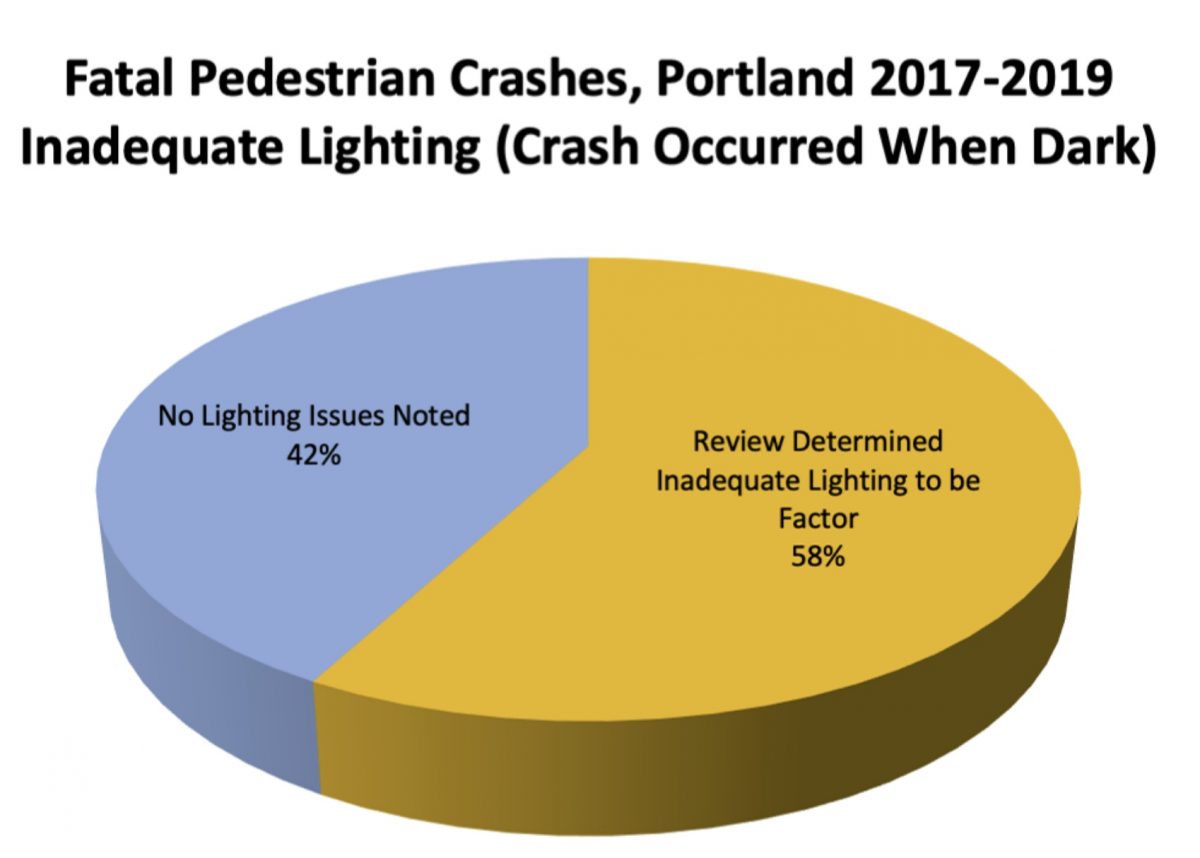
(Photo: Jonathan Maus/BikePortland)
A landmark report released today by Portland nonprofit Oregon Walks offers the most thorough examination of fatal pedestrian crashes we’ve ever seen.
The report (which we alluded to back in November) gives us not only a detailed analysis of each crash, but a host of important and well-informed recommendations on how to prevent them.
A team of volunteers led by local lawyer Scott Kocher of Forum Law Group (who’s also an Oregon Walks board member) split the report into three parts: Painstaking reconstructions of 48 fatal pedestrian crashes from 2017 to 2019; a higher-level “facts and figures” overview; and an analysis of nine “focus issues” and recommendations.
What was found in these reports won’t come as a huge shock to regular BikePortland readers, but the scope and detail of the report — along with its findings — are a vital tool for activists and should be seen as yet another red flag that Portland-area transportation agencies are not doing nearly enough to stem the tragic tide of deaths to vulnerable road users. The takeaways also underscore the fact that underserved people in our community are most at risk.
Advertisement
“Transportation planning cannot be successful in the absence of examining, understanding, and addressing systems of oppression as those most impacted by the policies that allow traffic fatalities to happen are those who are marginalized,” reads a summary of the report. “Policymakers, transportation agencies and community members alike must not only recognize the symptoms of infrastructure inadequacies, but acknowledge that the root cause of traffic crashes and pedestrian fatalities are highly influenced by systemic racism, poverty, inequality, systems of oppression, public policy, and unequal distribution of government resources.”
The report was given cover-story treatment in this week’s issue of the Pulitzer Prize-winning Willamette Week. Here’s an excerpt from the lead story:
“The records reveal an alarming, sometimes counterintuitive picture of a wildly inequitable system. The geographic and racial disparities are fed by three structural problems: The streets in East Portland are too wide, streetlights are inadequate and, most importantly, drivers go too fast.
… The 54 traffic deaths on Portland streets last year are the highest since 1996.
Dana Dickman, PBOT’s traffic safety section manager and Vision Zero lead, says people need to be patient. “In Vision Zero cities where they’ve gotten down to one or two deaths a year,” she says, “it’s taken a generation of investment.”
But Scott Kocher, an Oregon Walks board member who pulled together the group’s research, says Vision Zero is underachieving because PBOT is too cautious.
He says the agency fears conflict and has not aggressively sought to lower speed limits on more dangerous roads or deployed traffic-calming devices and new lighting that would make streets safer.”
And here are what the report authors say are key findings:
• Those living in the underserved area of East Portland are disproportionately affected by fatal pedestrian crashes with all crashes occurring in areas where the median income is below the city average.
• People who identify as Black, who are experiencing homelessness, who are Older Adults or who are Persons with Disabilities are all at a disproportionately high risk of being killed in collisions.
• Street lighting was found to be an urgent issue with 79% of crashes occurring in the dark with potential lighting inadequacies identified at a majority of these locations. Further engineering review is needed.
• A lack of traffic calming and speeds set above the statutory limit were a factor at a majority of fatal pedestrian crash locations.
• A majority of fatal pedestrian crashes occurred on roads that are designated by the Portland Bureau of Transportation (PBOT) as “High Crash Corridors.”
We’ll be leaning on the findings from this report for years and plan follow-ups in the coming days and weeks.
Learn more and check out the interactive crash map at OregonWalks.org/fatal-pedestrian-crash-report.
— Jonathan Maus: (503) 706-8804, @jonathan_maus on Twitter and jonathan@bikeportland.org
— Get our headlines delivered to your inbox.
— Support this independent community media outlet with a one-time contribution or monthly subscription.











Thanks for reading.
BikePortland has served this community with independent community journalism since 2005. We rely on subscriptions from readers like you to survive. Your financial support is vital in keeping this valuable resource alive and well.
Please subscribe today to strengthen and expand our work.
“He says the agency fears conflict and has not aggressively sought to lower speed limits on more dangerous roads or deployed traffic-calming devices and new lighting that would make streets safer.”
As long as PBoT administration continues to get good (or no) publicity, they will continue to make safe political choices to prioritize maintaining current traffic counts and parking, instead of designing streets for multiple modes and safety. Very thankful WWeek wrote this article, and hoping OPB and other news organizations will follow suit.
Sweden saw a huge decline in fatalities in its first ten years of Vision Zero (and this was in to context of increased VMT):
https://www.itf-oecd.org/sites/default/files/sweden-road-safety.pdf
What’s lacking in Portland is the political will and funding needed to begin to address driver violence in a serious manner. And the stark geographic inequity highlighted in the OW report is probably the primary reason for Portland’s lack of will/funding.
So, the once-a-month or fewer, “enforcement actions” at marked crosswalks have no effect? What a surprise.
We’ve also apparently concluded that putting up new signs with different, lower numbers has no meaningful effect. Wow.
Drivers going too fast could be countered by E N F O R C E M E N T. Oh, I forgot, that could have a negative impact on non-privileged motorists. Never mind. Let’s just wait until we have 150 deaths per year. The we can set up a task force, develop some policies, publish some metrics, and produce an annual report. And, wring our hands about what to do.
I missed this part. Pretty sure it says deaths are occurring on streets where the speeds haven’t been reduced and are above the statutory limit. Also didn’t they determine reducing the speed to 20 in neighborhoods reduced the overall speed of drivers over 35 by like 50%? Oh ya here it is.
https://bikeportland.org/2020/12/01/report-citys-new-20-mph-signs-have-reduced-top-end-speeds-323311
Yes and bravo–ALL drivers, not just drivers of color, should have as their main emotion when getting behind the wheel, a paralyzing fear of police. STOP. THE. BLEEDING. FIRST.
Scanning through the report, I am struggling to find more than just a few cases where the driver was anywhere close to the actual speed limit. Until we have speed cameras on every street in this city, the deaths will continue.
Looking at this report, it’s hard to see our streets as anything but a killing machine for pedestrians who are either impaired or limited mobility. If you want to die, just attempt cross outer Stark at 11pm.
Isn’t inadequate street lighting and driving too fast for conditions kind of the same thing? I am suspicious that inadequate street lighting is a way to divert responsibility from the operators of multi-ton machines. Pick your favorite – I didn’t see them, it was dark, they wore dark clothing.